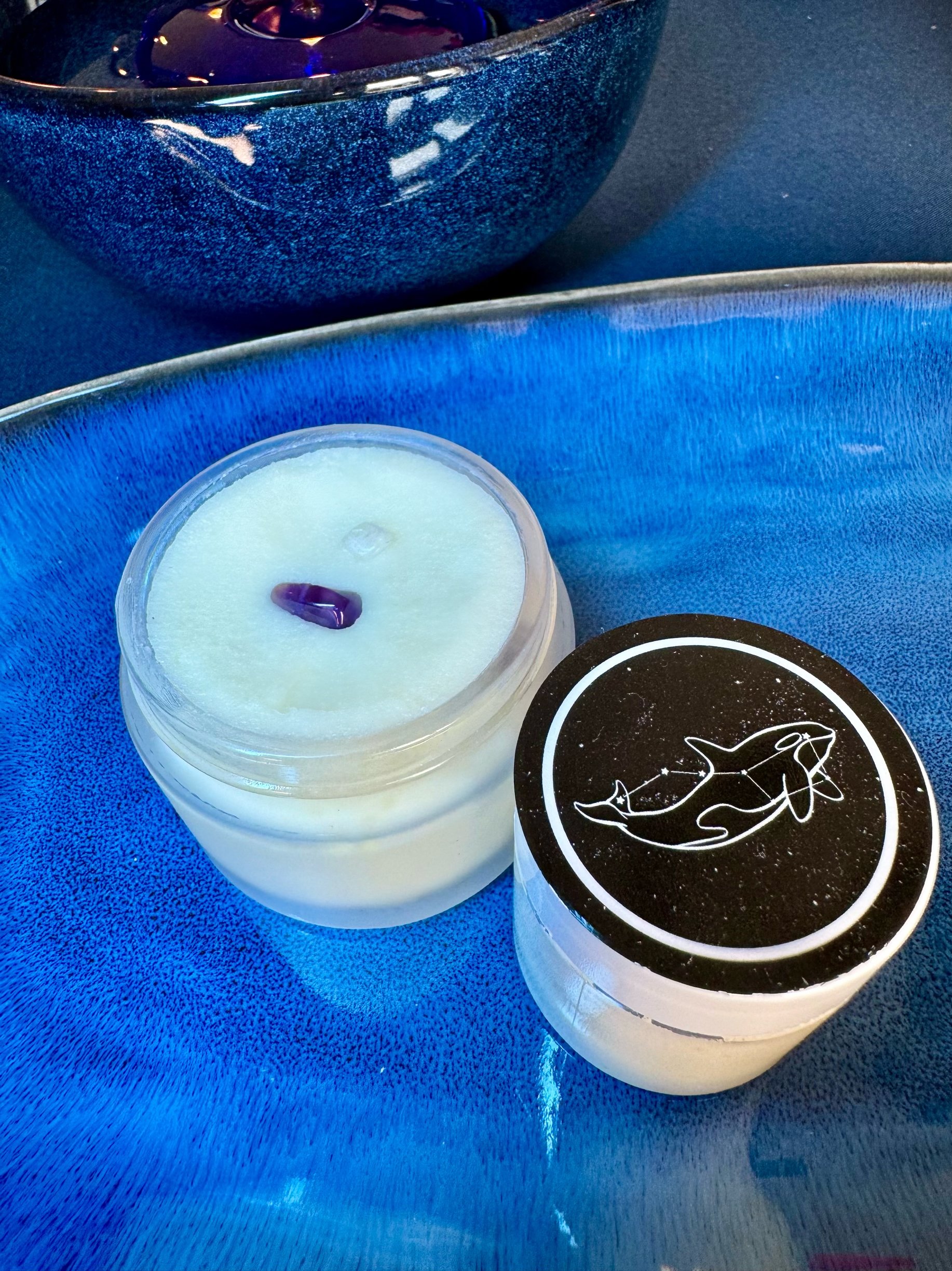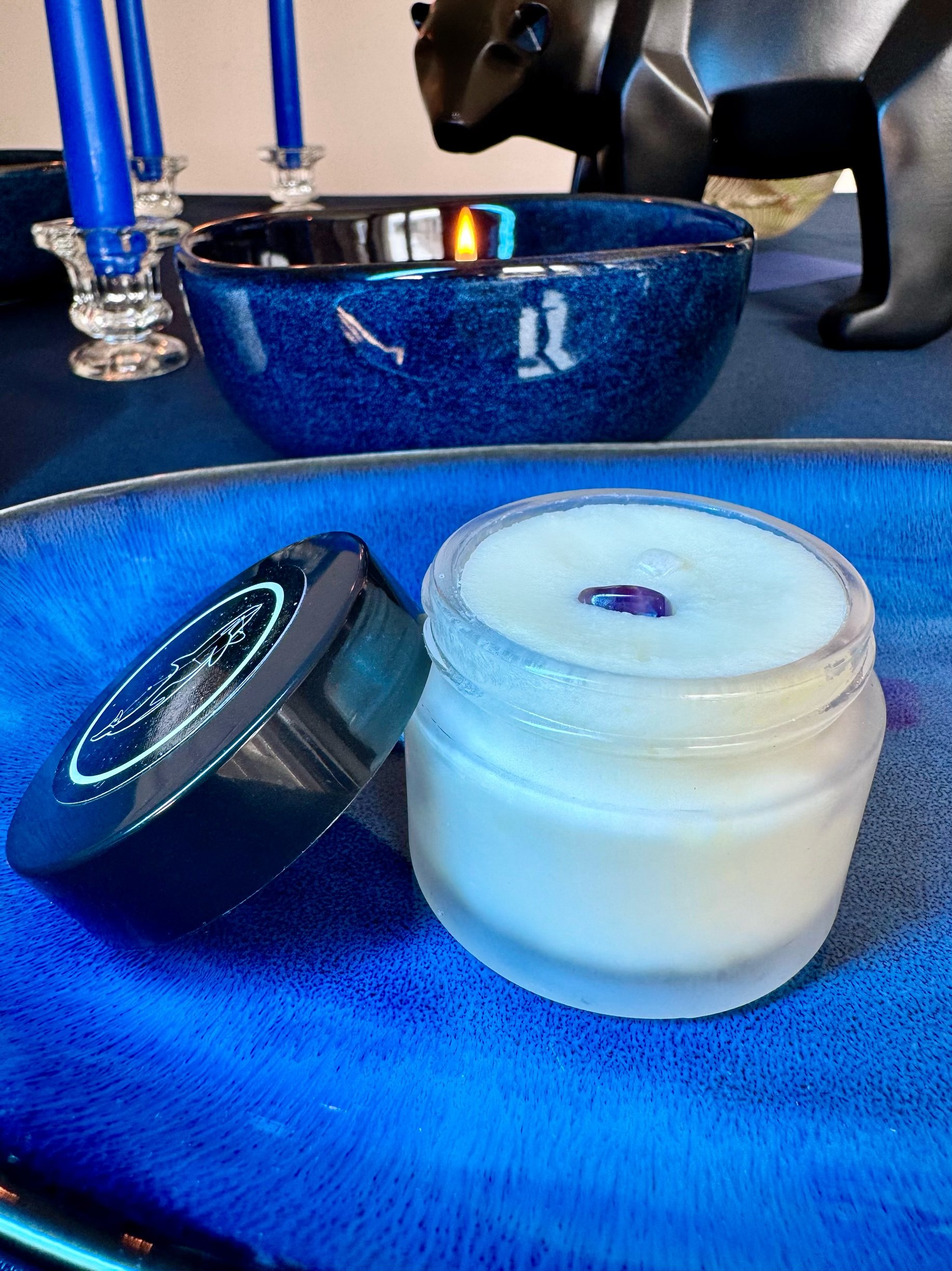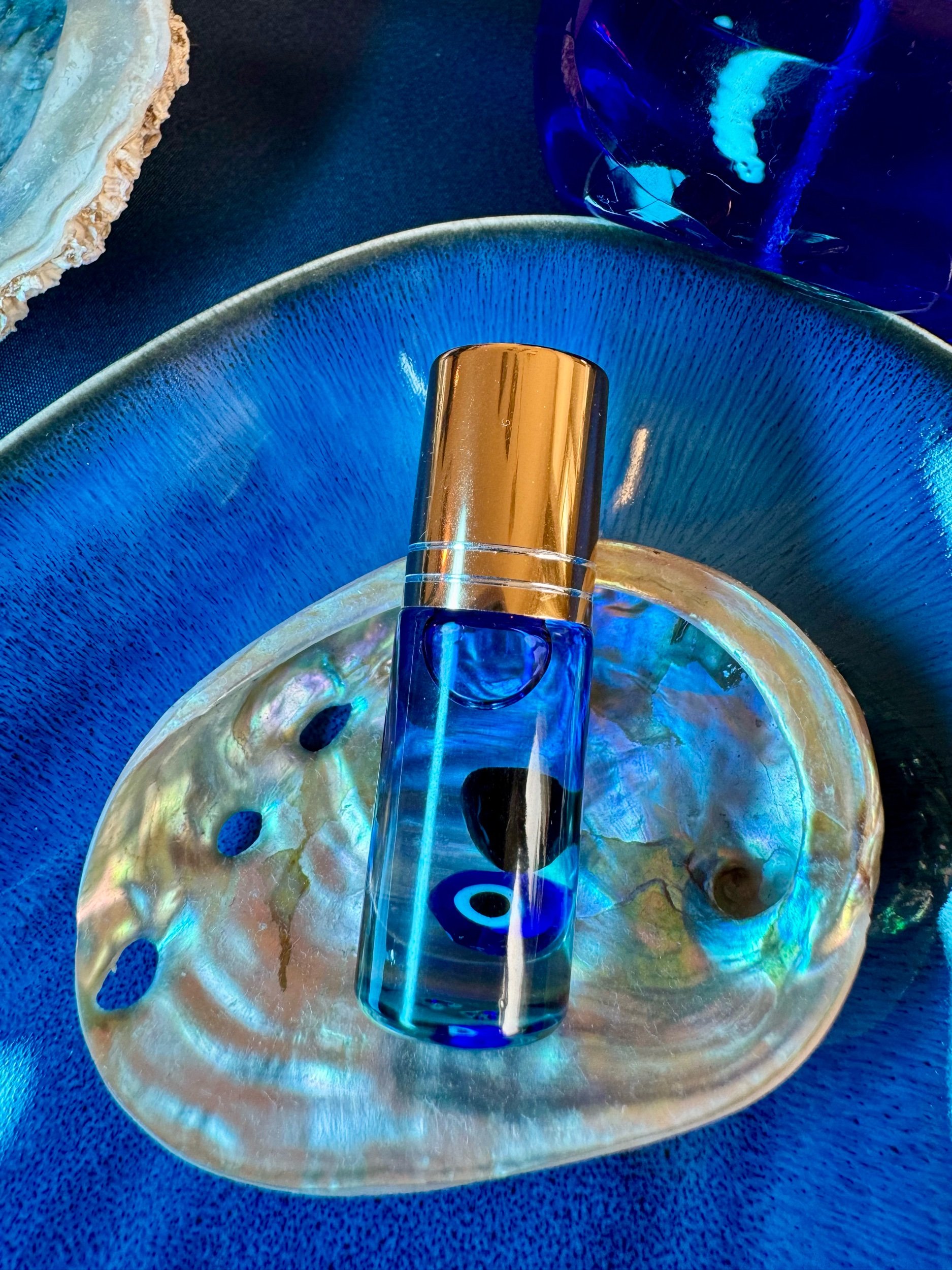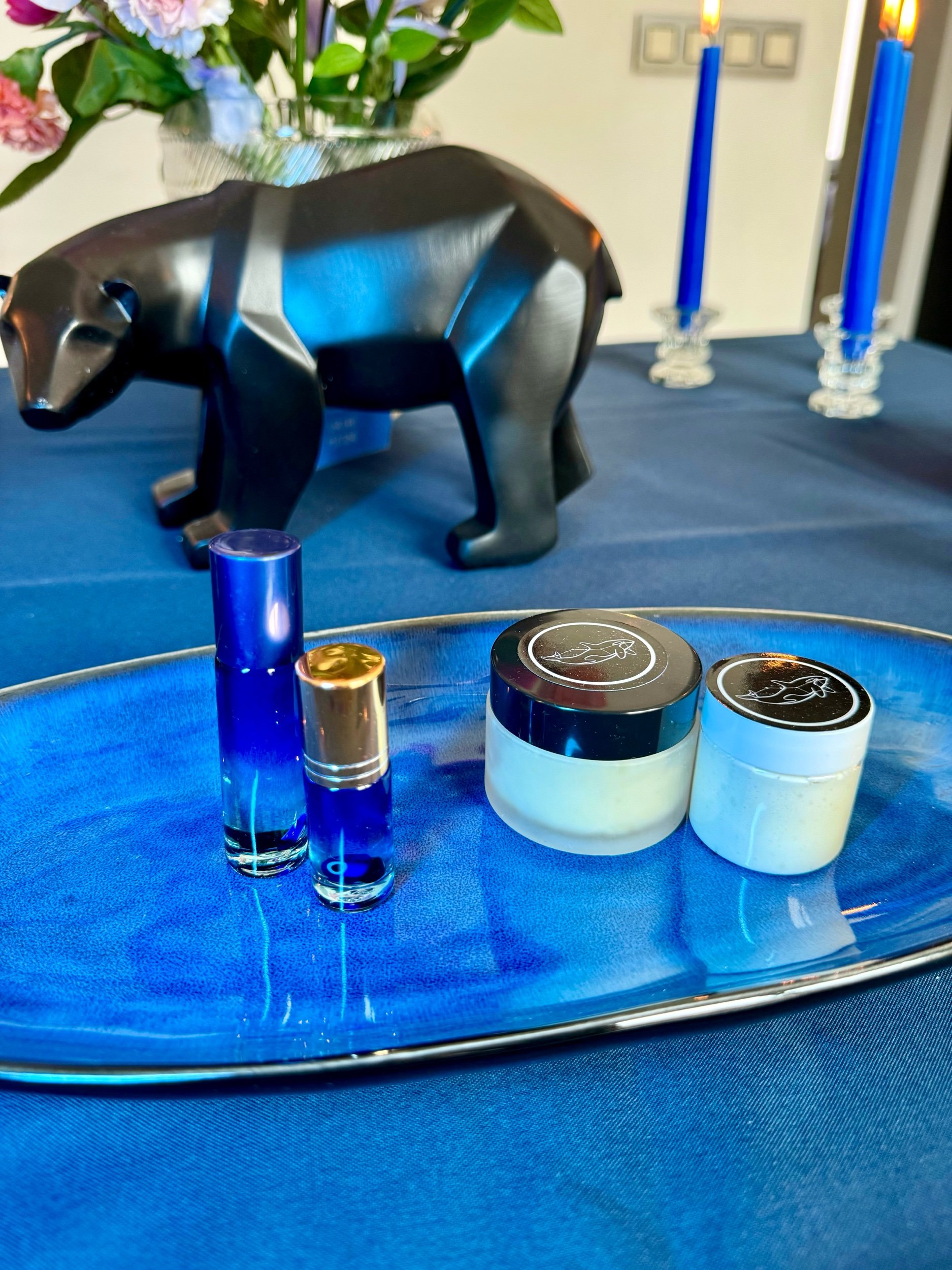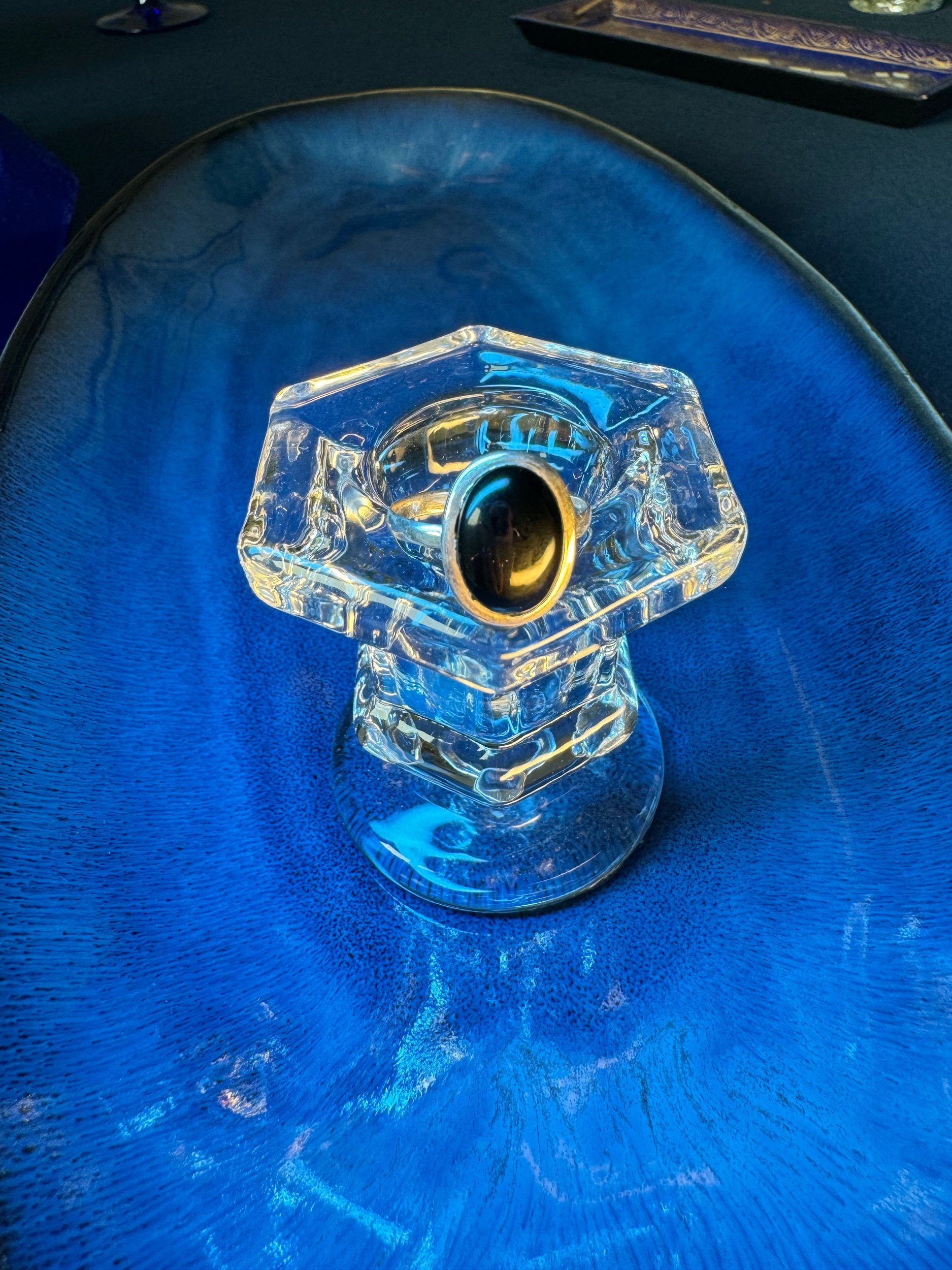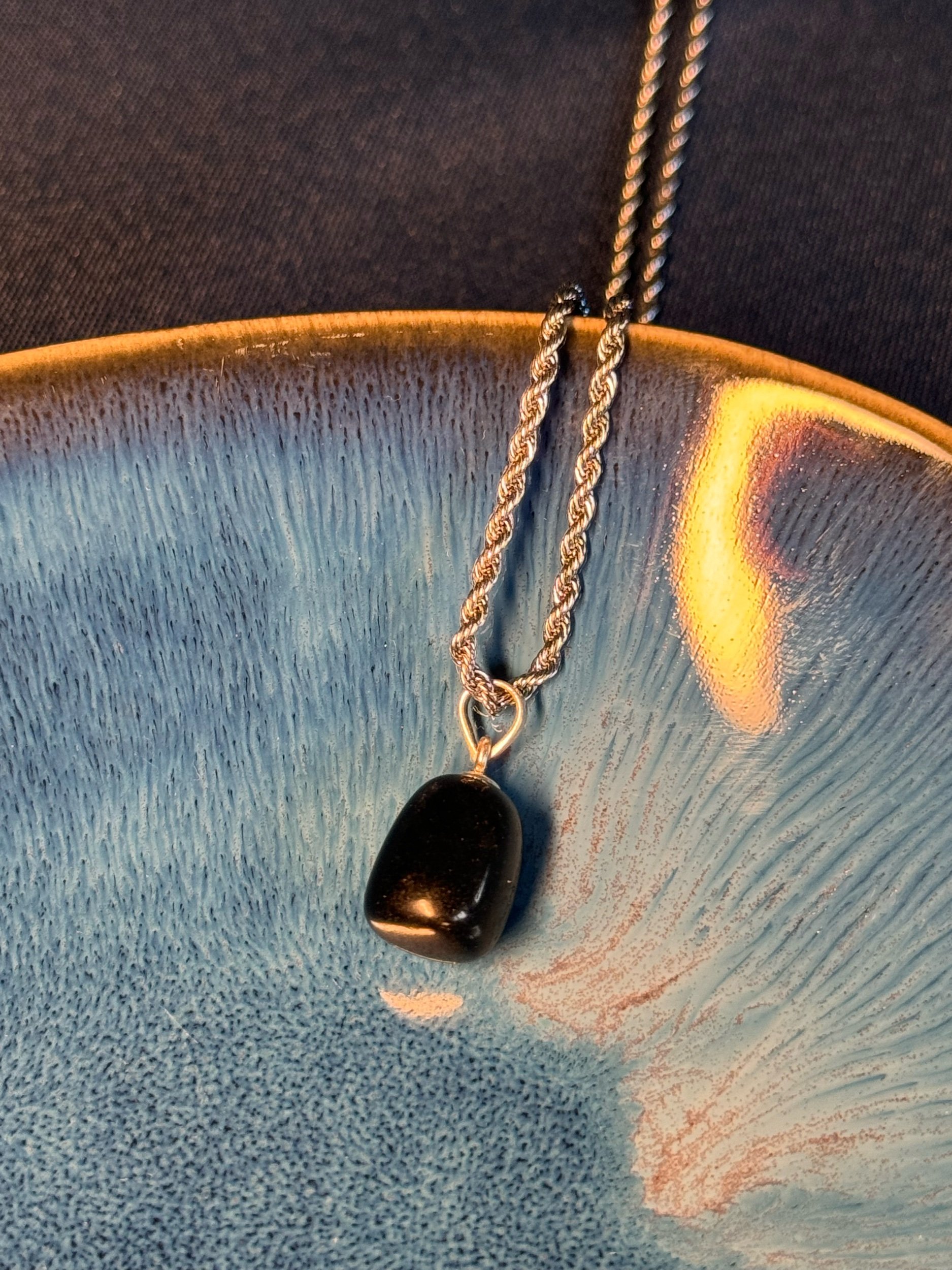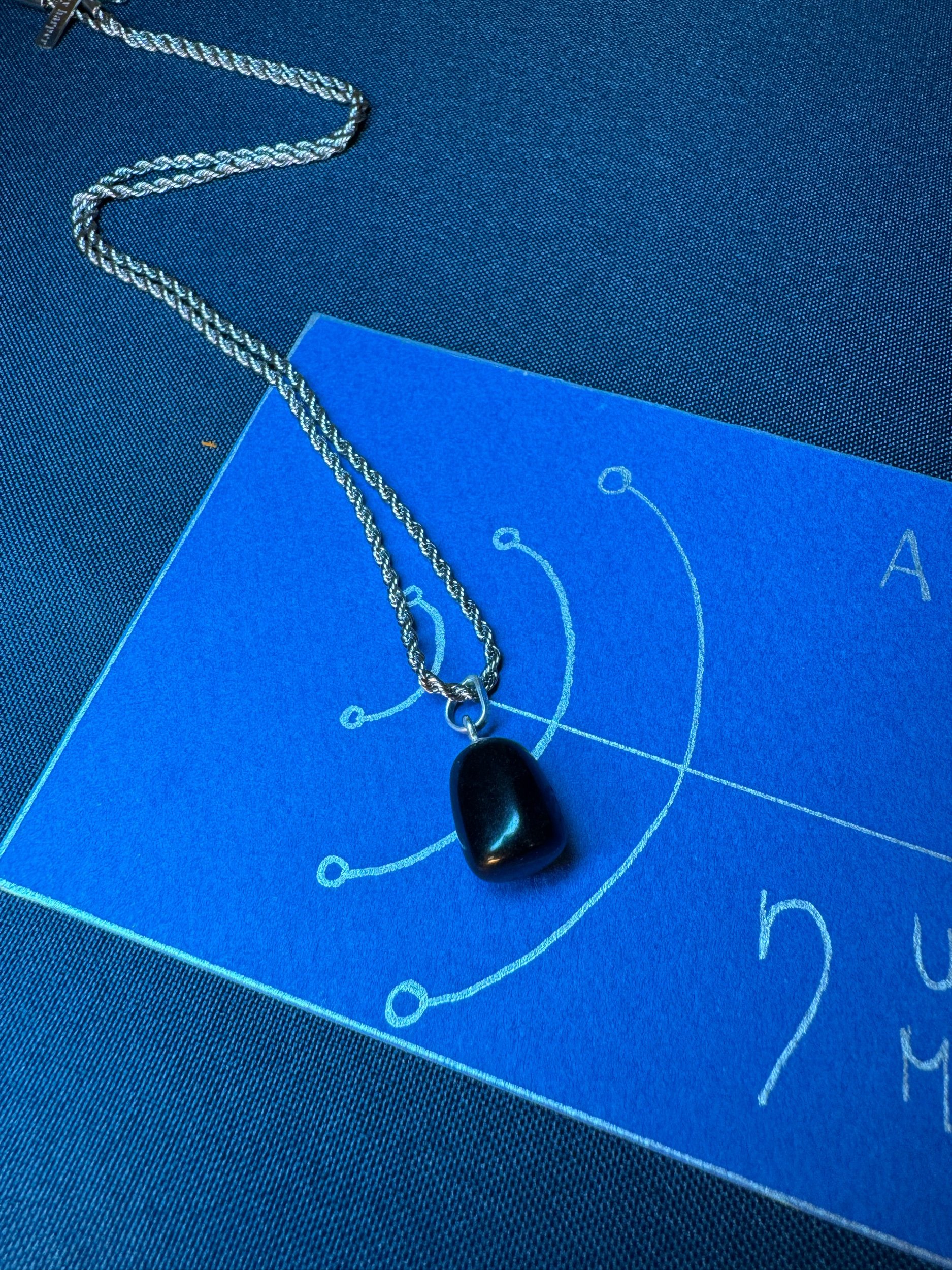
Alkaid
Protection, Safety from Spiritual Attacks & Thieves
About this Collection…
Without knowing it, you're probably a lot more familiar with fixed star Alkaid than you think. How do I know, you may ask?
Close your eyes, and think of the constellations you know - their shape, name, what they look like... I bet there's at least one you've heard of: Ursa Major, better known as the Big Dipper. Yes, Alkaid is part of that! You've probably looked at this bright star more than once.
The third brightest star in our skies, Alkaid is hard to miss — yet most of us don’t know it terribly well. As your astrologer, someone who studies and speaks the language of the stars, my goal is to take you on an initiatory journey to discover the meaning of the constellations that populate our skies. Traditionally known as the great She-Bear, used in astrological magic for safety, protection from (spiritual) attacks and thieves, Alkaid is a mythical star of protection. But more than that, Alkaid’s story is about the bounds between the sacred and the wild, about nature, nurture and how humans relate to the divine. Let’s dive in!
Introduction to Alkaid
Let’s star with the basics: what is a fixed star? When you look up to the night sky, you can see different celestial bodies. Some of them, like the Moon (our satellite), Venus or Mars are planets which belong to our solar system. Their position will move from day to day or year to year. For example, in April 2025, Venus will be in a different spot in the sky compared to where she is now!
On the contrary, fixed stars don’t seem to move from our point of view. From year to year, Alkaid will be in the exact same spot in the sky, hence the name of “fixed” star (in reality it does move due to precession, albeit extremely slowly). Because of this, fixed stars and constellations became important to humans from the very beginning of our existence, for all sorts of purposes: agriculture (deciding when to sow the crops), navigation (orienting yourself with no land in sight!), and many other uses!
In ancient astrology, fixed stars had great mythical & practical powers: tied to a native’s life story through their chart, or with their image impressed on a talisman, fixed stars could bring various auspicious things to mankind. As a result, a rich history of myths, legends and scientific knowledge spanning hundreds of thousands of years surrounds fixed stars: associated with animals, heroes or mythical objects, these stars have a lot to teach us about what it means to be human in connection with the divine.
Alkaid is no exception, and is one of the most cited stars in myths and folklore, from ancient Greek myths to the Bible and slavic legends.
II. Alkaid — What It’s All About
A Bit of History
Alkaid, also known as “Benatnasch” or Eta Ursa Major is the “tail” of the Ursa Major constellation. She currently sits at 27°16’ Virgo. Her current name comes from the Arabic “Ka’id Banat al Na’ash”, meaning the “Leader of the Daughters of the Bier”, or “The Chief of the Mourners”. Interestingly, this names already evokes a connection to grief and mourning — something we will discuss later.
For now, let’s focus on the history and use of the star. Alkaid is one of the most cited stars in ancient myths, with a very ancient lore: some sources date the assimilation of Ursa Major to a bear back to over 13,000 years ago. She is cited in the Bible and in Homer’s Odyssey as one of the only constellations that does not disappear under the horizon — thus being used as a reference star for navigation. This is because Alkaid is what we call a circumpolar star: very close to the North Pole, she seems to simply revolve around it (as opposed to rising and setting stars such as Sirius, which seem to sink under and rise above our horizon at certain times of the year). As such, Alkaid was thought to be of divine nature, never touching our planet to impart her wisdom and thus remaining as an otherworldly being in the Omphalos, the sacred dimension of the Gods found beyond the North Pole.
In Greek mythology, the story of Alkaid comes from one of goddess Artemis’ nymphs, Callisto. Goddess of the hunt, wilderness and nature, Artemis was a virgin deity whose companions — all women — took a vow of chastity. Upon seeing Callisto, Zeus, king of the Gods, lusted after her. In order to seduce her, he disguised himself and took the appearance of Artemis. As a result, Callisto became pregnant with a son named Arcas. Then, versions differ: someone (either Hera, Zeus’ wife, furious that her husband committed adultery, or Artemis, whose anger is sparked by her nymph’s broken vow of chastity) punishes Callisto. She is either turned into a bear by Artemis as a punishment, or by Zeus to dissimulate her from Hera. As she roams through the forest, her son Arcas mistakes her for a real bear and tries to hunt her. To save them both, Zeus turns them into the constellations we know today: Ursa Major and Boötes, whose main star Arcturus is named after Callisto’s son.
As you may have noticed, this is not exactly a girl’s girl myth: Callisto’s unjust fate and relentless pursuit by those who wronged her, if anything, is a heartbreaking story. Upon learning about this, I began to wonder what the deeper meaning behind it was: why is a star traditionally associated with protection symbolised by a story of defencelessness and abuse? Without knowing it, I was tugging on an essential part of Alkaid’s story: a larger metaphor of the violation of the sacred, of the divine found within wilderness and of mighty protection. Which takes me to the next part of this journey…
Alkaid: Myths & Magical Applications
Alkaid is one of the 15 Behenian fixed stars — stars renowned in the Arabic and European medieval world for their magical applications. Each star is associated with a gemstone and a plant, and magical rituals could be conducted to ensoul an object (like a talisman) which would bestow the properties of the star onto its wearer.
As such, Alkaid came to be regarded as a prime star for protection and safety. Renaissance mage Cornelius Agrippa says that an Alkaid talisman “availeth against incantations, and maketh him who carrieth it secure in his travels.” On The 15 Fixed Stars, a text attributed to mythical figure Hermes says that Alkaid “is strong against incantations and against assassins and gives security from them, and if with this is placed the tooth of a wolf it protects also from robbers and thieves.” Some powerful significations here!
In many cultures spanning all of history, bears have been seen as a symbol of strength, courage and wisdom. The most worshipped animal in many slavic traditions, the bear became the king of the forest — its powers were so formidable and terrifying that its name became taboo, instead being called by euphemistic epithets still found in many slavic languages today, such as the Russian “медведь” (medved, “honey-eater”). In many ways, the bear is a symbol of wilderness, of the enchanted and enigmatic world of the forest. In the ancient world, forests were impenetrable and fantastic places, populated by no less fantastical beings such as cunning foxes, majestic lions, powerful bears, unicorns and dragons. In real life, forests were dangerous places (the Black Forest in Germany was the sources of many legends and folklore, as it was known as a haunted place), where humans should only go for precise purposes: a rite of passage, or a symbolic quest. One such example is “Yvain, the Knight of the Lion”, a novel written by medieval author Chrétien de Troyes about a knight’s journey through the forest in quest of the Holy Grail.
Many other examples of the forest as a dangerous and magical place populate European folklore: Goldilocks and the Little Red Riding Hood are all stories that warn humans (often girls and young women) not to venture into the forest (representing the unknown, and the dangers of venturing beyond the confines of the home). In many ways, the bear represents the spirit of the forest: wild, untamed and sacred, its habitat should not be crossed at the risk of violating the fundamental boundaries between the sacred and the profane. Think of the myth of Callisto I mentioned earlier: this is a metaphor of the original purity and natural state of the wilderness (symbolised by Artemis’ and Callisto’s virginity) being violated — of the incursion of the profane into the sacred space of the wild.
This myth and its meaning are extremely relevant to our modern world: the Greeks already had an awareness of the corruption of the state of nature by civilisation. What is to be said, then, about the current state of the world and how we treat (read: exploit, abuse) our natural resources? About our disregard for animal and human life, about our continuous pillaging and disrespect of natural and sacred sites? Think of Hawai’i, an island where the native population is made homeless by speculation over land and housing, where traditionally sacred spaces (rivers, mountains) are disfigured for the exploitation of their resources, thereby polluting the land and water?
The story of Alkaid is deeply important to who we are as humans and to our relationship to the non-human. I believe Alkaid enjoins us to consider what happens when we think of ourselves not as owners of the land and spaces we inhabit, but as custodians of it. In a world where few taboos exist, where we are obsessed with de-sacralising and de-enchanting what surrounds us (with claims of irrationality or witchcraft, of uncivilisation or paganism), Alkaid asks us what has become so uncomfortable for us in simply contemplating the divine and accepting that not every space, not every realm is for us. In that way, it makes sense that Alkaid is a star of protection: she symbolises those places that are unaccessible and should remain so, and shields us as we cross them — on one condition: that we respect what they are and what they mean. If we want to be protected from intruders, let us not be intruders. If we want to not be stolen from, do not steal things that do not belong to us in the first place.
This leads me to the story of my personal experience with Alkaid, and how you can get to know the star in a magical context…
The Magic of the Orca-Bear
On May 28, 2023 — nearly a year ago — I found an extremely auspicious election to create Alkaid talismans and talismanic materia under. As the Moon was moving to conjoin the degree of Alkaid, the star was culminating on the Midheaven, high up in the sky at 27° Virgo. This election was such a beautiful moment, filled with a warm feeling of safety, protection and benevolence. In the days leading up to this election, something strange happened: as I divined on this particular moment and what would come out of the creation of these talismans, Alkaid appeared to me in the form of… an orca.
I was initially quite surprised by this — why would Alkaid appear to me in the form of an orca, a very social marine creature known to travel in packs while bears and especially she-bears, the symbol of Alkaid, are solitary animals that hibernate for a good portion of the year? After deeper divination and extensive research, the answer appeared quite clearly to me. As I said before, Alkaid and its animal the she-bear are symbols of protection of the wilderness and natural resources — a reminder that we should respect the sacred wherever it is.
Around the time that I created this collection, reports of yacht attacks by orcas started being widely discussed, and many articles were published about this phenomenon. What constituted a novelty about these incidents was not these attacks per se, which can definitely happen, but the incredible coordination of the orcas who led them (often attacking as a pack, as opposed to isolated individuals), and the fact that so many were reported in such a brief amount of time. It remains unclear why these attacks were perpetrated to this day. Some people have speculated that the orcas, disturbed by the noise made by yachts as well as by their pollution and the fact they would disrupt their food sources started repeatedly attacking them.
In many ways, this reminds me of the myth of Alkaid-Callisto, about the defence and preservation of sacred natural spaces. In many ways, the ocean is similar to the forest. The association of the ocean with leisure, beach and holiday is quite recent, and started to become a thing around the late 19th and 20th century, when tanning became fashion (and a sign of the elite, leisure class) and when paid leave started to become widely implemented in Europe. For the majority of human history, the ocean was considered a dangerous place, populated with monsters and fantastic beings like the Kraken (a giant squid), mermaids and other deep-sea creatures — in a lot of way, similar to the forest. Even people of the sea — Polynesians and Pacific ocean people, who explored island — revered and paid respect to the ocean, capable of bringing food and abundance just like storms and tsunamis.
Even today, we know space and have explored it more than we have the ocean. The abyss and deep-sea still hold many secrets — away from the light of the Sun, they are perhaps our last sacred and mysterious places. In many ways, orcas are the bears of our times. Interestingly, some Native American cultures of the Pacific North-West have attributed eerily Alkaidian qualities to orcas: known as the “lord of the ocean”, orcas symbolise “family, romance, longevity, harmony, travel, community and protection. He is said to protect those who travel away from home, and lead them back when the time comes.” This is uncannily similar to the description of Alkaid’s magical properties as described by Cornelius Agrippa, which “maketh him who carrieth it secure in his travels.”
Both bears and orcas evoke an idea of tremendous strength and majesty: one of the mightiest predators in their environment, they symbolise the awe-inspiring forces of nature. But there is another side to these beautiful giants: their tenderness. The protective side shows when caring for their young. When I think of Alkaid as a she-bear, I think of mother polar bears who give birth to and care for their young in the shelter they dug for hibernation. They feed their cubs, tiny and blind at birth with the milk they produce from their own provisions of fat they have accumulated during the months of spring. There is something deeply touching about this — the mothers feed and protect their cubs to the peril of their own life. They are incredibly tender towards them, yet fiercely aggressive towards any potential threat.
This is even more glaring in the case of orcas. These mammals have peculiar matrilineal structures: orcas spend their lives amongst their families, which always revolves a grandmother orca. Female orcas reproduce until around age 40, and their children (male and female) remain in the same pods. Deeply intelligent and social, orcas are fierce protectors of one another and can develop separation anxiety and important behavioural problems if separated from their pods. There is strong familial and maternal symbolism found within Alkaid, and I believe her coming to me as an orca makes perfect sense. Alkaid’s protection does not only act at an outwards level, but also in an inner one — the sense of safety she provides comes from the protective shield she builds. Like an orca calf raised surrounded the love of his family or a bear cub cozily nestled in the paws of its mother, Alkaid makes us feel safe and whole because she knows exactly what we need.
Safety and protection are not just found in knowing when to attack or retreat, but first and foremost by fostering a fulfilling environment that we can safely retreat to, and where our needs will be tended to. This is one of the core and most beautiful meaning of Alkaid, and one I found deeply moving as I got to know this stunning star.
As mentioned earlier in this article, Alkaid is also a star of grief. Her Arabic name, which means “Leader of the Mourners” evokes the consoling embrace of a loved one after death occurs. I am once again reminded of the orca grandmother in every orca family, the matriarch that leads and cares for her pod. The Alkaid election I consecrated talismans under in May 2023 features a Moon in the third decan of Virgo, which is known for its association with grief, mourning and awareness of the passing of all things. The tropical degree of Alkaid currently sits at 27° Virgo, which is also in that decan (though it was not the case in ancient times as this is due to precession).
The tenderness of the Mother Orca and the Mother Bear can be invoked as much for protection as it can be for comfort and support through the difficult periods of life which death and mourning inevitably mark. I’m reminded of a series of material made by Kaitlin Coppock through Sphere & Sundry , “Immortal Heart”, which featured a Virgo III Moon election to help with matters of grief and comfort in difficult times. This is the gentle yet profound impact I feel from Alkaid — her presence and magic are a protective balm, a safe cocoon of love where every emotion, complex feeling and need can be expressed and tended to.
A star of benevolent protection, Alkaid surrounds us in love. Like a gentle mother who embraces us and dries our tears, Alkaid, the spirit of the forest and the ocean, remains with us through it all.
I hope this article has brought some clarity, shining a fair light on the phenomenal star that is Alkaid. Star of the She-Bear and the mighty Orca, Alkaid asks us deep questions about our relationship to the wilderness and the sacred. A nymph, fierce king of the forest and the sea, loving mother and benevolent protectress, Alkaid has many things to teach us. I hope her protection, sweetness and fierce shield can help you through your darkness nights and most tender days.
hope you enjoyed this Alkaid portrait! I will now leave you to the offerings of this celestial collection 👇
Shop the Collection
🧿
Shop the Collection
🧿
Shop the Collection 🧿 Shop the Collection 🧿

